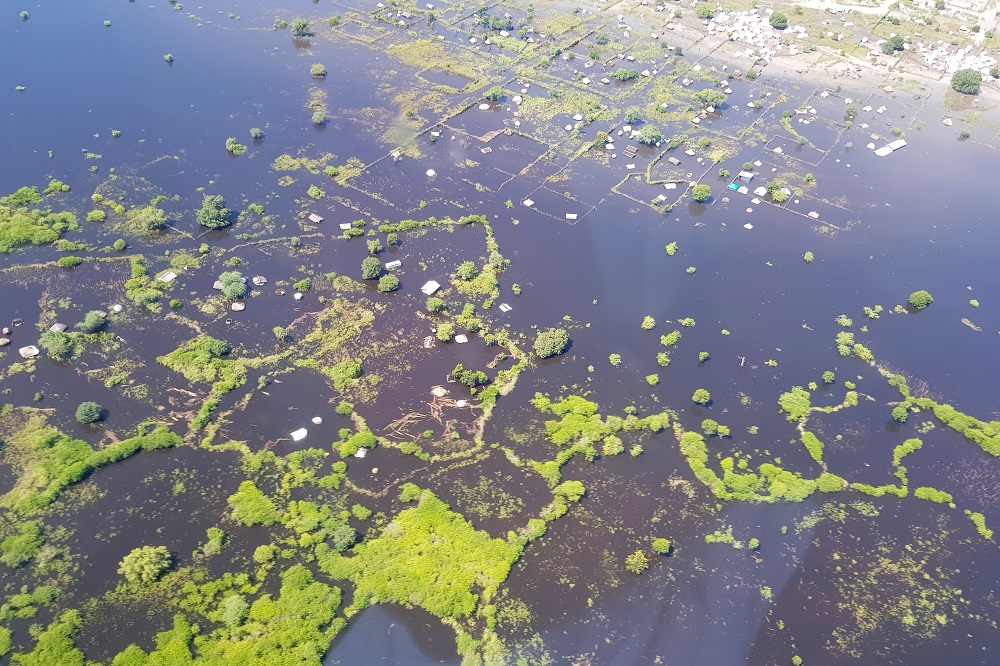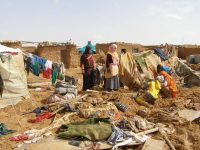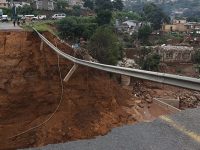Faced with a deteriorating nutrition situation in the Sahrawi refugee camps, including over 75 percent…

South Sudan: Thousands Stranded and Areas Inaccessible for Assistance After Devastating Floods
South Sudan: Thousands Stranded and Areas Inaccessible for Assistance After Devastating Floods
In northeast South Sudan violent floods left thousands stranded in inaccessible areas, threatening to worsen an already catastrophic humanitarian crisis in the country. Mèdecins Sans Frontier (MSF) is working to guarantee access for medical treatment in the areas that have been hit and has launched emergency assessments to ensure that the population receives proper assistance.
MSF is urging all organisations in the area to mobilise resources to mitigate the impact of rising flood levels and to ensure that adequate attention is provided, in particular in Pibor where the hospital was completely flooded.
“Transports are very difficult. We can reach only by helicopter, planes cannot land. There is no safe access to safe water because the boreholes, the wells, are contaminated. We have to react quickly in order to provide them with shelter, clean water and access to health care,” states Alberto
Zerboni MSF Operations Coordinator in South Sudan (VIDEO).
“In an effort to continue providing services, the MSF team constructed a tented facility on higher ground, but this is expected to flood within days,” say MSF sources
“For this reason we will put additional structures that are inflatable tents, a modular field hospital, on even higher ground,” adds Zerboni
In Pibor, MSF was forced to reduce lifesaving activities and discharge patients when the hospital and compound flooded.
“As soon as possible, the remaining nine patients in our care will be moved to a safer location, […] and we are urgently working to provide access to the necessary treatments and safety for this community,” says Roderick Embuido, MSF’s medical coordinator in South Sudan.
In Maban, the UNHCR estimates that over 200,00 people were hit by the floods. In the MSF health centre, a critically ill child receiving oxygen died when the electric generators stopped working because they were flooded. Even the MSF compound also flooded and the roads are impassable temporarily preventing the team from reaching the health centre.
“We are extremely concerned for people in outlying areas around Pibor and Maban. Our attention is on urgently conducting aerial and ground assessments to understand the broader impact of the flooding and to adapt our existing activities in Pibor to a continuously changing situation,” says Kim Gielens, MSF head of mission in South Sudan.
“We know that with rising and contaminated water sources comes the risk of outbreaks of deadly waterborne diseases like cholera and hepatitis A and we can also expect a rapid increase in acute watery diarrhoea, malaria and respiratory tract infections – three of the biggest killers in South Sudan. International and national organisations must mobilise immediately to ensure provision of food, water, shelter and healthcare,” Gielens says.
MSF also fears that flooding will increase the risk of malnutrition due to the destruction of food stocks and crops. In Maban, patients told us that the prices of what little food is available has tripled and many can’t afford it.
In a country where malaria is the main cause of death in children under five and for which MSF treats almost 300,000 patients a year, a further increase in the spread of disease will have serious consequences for the people who cannot access treatment centres.
MSF also fears a potential increase of victims from snakebites because snakes will move towards drier land where displaced people will also seek refuge from the floods. The MSF team often see fatal or debilitating consequences from snakebite poisoning at the hospital in Pibor that is not accessible at this time.
Seven milion people, around two-thirds of the population of South Sudan, are in desperate need of humanitarian aid and the consequences brought on by the floods will worsen their conditions further, undermining their resilience, defence mechanisms, and access to lifesaving treatment.




